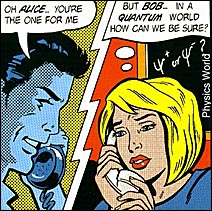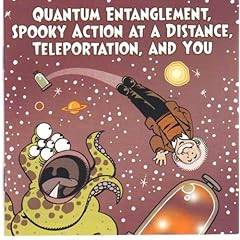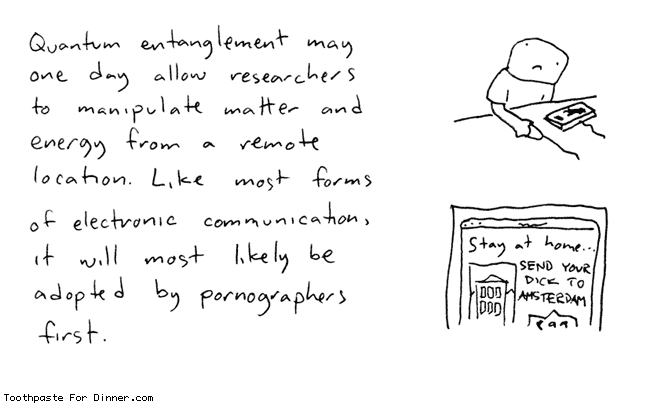

Quantum entanglement is a possible property of a quantum mechanical state of a system of two or more objects in which the quantum states of the constituting objects are linked together so that one object can no longer be adequately described without full mention of its counterpart — even though the individual objects may be spatially separated. This interconnection leads to non-classical correlations between observable physical properties of remotesystems, often referred to as nonlocal correlations. For example, quantum mechanics holds that observables such asspin are indeterminate until such time as some physical intervention is made to measure the spin of the object in question. In the singlet state of two spins it is equally likely that any given particle will be observed to be spin-up as that it will be spin-down. Measuring any number of particles will result in an unpredictable series of measures that will tend more and more closely to half up and half down. However, if this experiment is done with entangled particles the results are quite different. When two members of an entangled pair are measured, one will always be spin-up and the other will be spin-down.[citation needed] The distance between the two particles is irrelevant. Theories involving 'hidden variables' have been proposed in order to explain this result; these hidden variables account for the spin of each particle, and are determined when the entangled pair is created. It may appear then that the hidden variables must be in communication no matter how far apart the particles are, that the hidden variable describing one particle must be able to change instantly when the other is measured. If the hidden variables stop interacting when they are far apart, the statistics of multiple measurements must obey an inequality (called Bell's inequality), which is, however, violated — both by quantum mechanical theory and in experiments.[citation needed]

DESPUES ENCONTRE ESTO...
If you find it surprising that a particle can simultaneously pass through two slits, just wait: it gets weirder. According to quantum theory, two particles that interact become entangled from that point on. They are both described by a single combined wave function. If a measurement is made on one particle, it instantly influences the state of the other particle no matter how far the two particles are separated from each other.
MAS...

No hay comentarios:
Publicar un comentario